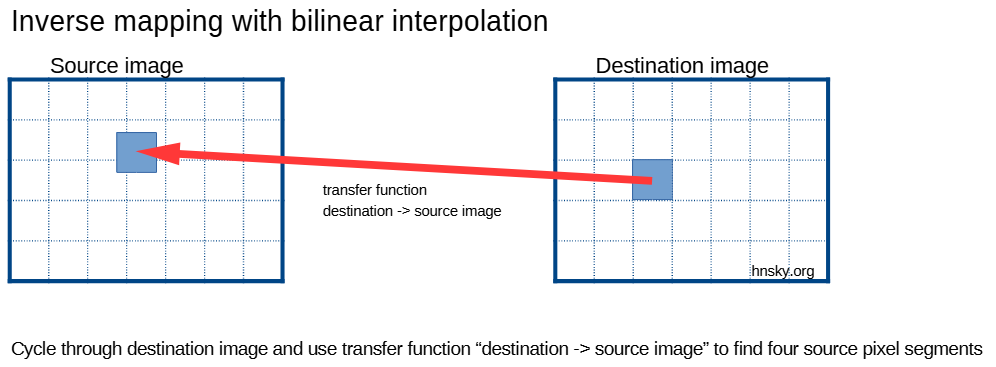Reverse Mapping in Image Stacking

In reverse mapping, each pixel in the destination image is computed by sampling the appropriate location in the source image, based on a geometric transformation (e.g. translation, rotation, or affine warp).
Practical benefits for astronomical images:
- Lower background noise
- Better star shape
How It Works:
- Loop through each pixel
(dx, dy)in the destination image grid. - Apply the inverse transformation to compute the
corresponding location
(sx, sy)in the source image:
(sx, sy) = inverse_transform(dx, dy) - The calculated
(sx, sy)will typically fall between pixels in the source image. - Use bilinear interpolation
to compute the final pixel value at
(dx, dy): - Identify the four neighboring pixels
surrounding
(sx, sy). - Compute a weighted average based on the subpixel position.
Bilinear Interpolation Formula:
value =
(1 - fx) * (1 - fy) * I(x, y) +
fx * (1 - fy) * I(x+1, y) +
(1 - fx) * fy * I(x, y+1) +
fx * fy * I(x+1, y+1)Where:
(x, y)is the integer floor of(sx, sy)fx = frac(sx),fy = frac(sy)I(x, y)is the pixel value at that coordinate in the source image
Why Use Reverse Mapping?
- Ensures that every pixel in the destination image is filled.
- Avoids gaps or overlapping pixels common with forward mapping.
- Enables accurate stacking, averaging, or sigma-clipping at consistent locations.

